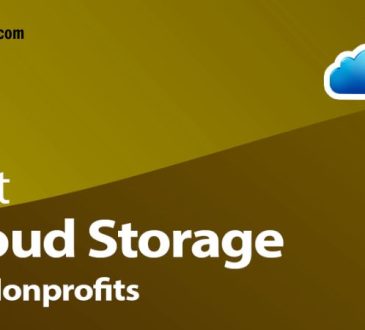
What is IaaS in Cloud Computing? Do you understand what a cloud is? To the majority of us, a cloud is a magical place in which our data is kept safe and secure. But it’s undoubtedly more complex than that. Cloud service is critical for organizations that store data about their customers as well as inventory, but it can be confusing and expensive.
Preserving on-premises IT infrastructure may be both expensive and time-consuming. As a result, as organizations pursue digital strategies, customer requests for cloud infrastructure as a service (IaaS) are increasing. Best talent with cloud computing abilities and expertise, on the other hand, is still difficult to find.
Understanding “What is IaaS in Cloud Computing?”, and how to analyze, evaluate, and lay out cloud service solutions necessitate a basic understanding of the various components that are frequently used.
What is IaaS in Cloud Computing?

So, What is IaaS in Cloud Computing? The official definition of IaaS is as follows: Infrastructure as a service (IaaS) is a cloud-based service that provides computing, memory, storage, networking, and software platforms, such as operating systems and databases, to replace the traditional on-premises data center infrastructure.
To put it simply, IaaS is primarily virtual servers that a customer rent costs from another business that runs a data center. IaaS, in essence, promotes access over ownership.
This solution gives the end user flexibility in terms of hosting custom-built applications or standard software, as well as an overall data center for storage.
Customers can use IaaS in one of three ways, as stated by the National National Institute of Standards and Technology (NIST):
- Private Cloud: Infrastructure services are reserved for a single organization’s exclusive use. The organization or some combination may own, a third party, manage and operate the physical infrastructure, which may emerge on or off premises.
- Infrastructure services are procured to be consumed by multiple organizations in the public cloud. A business, government organization, academic, or some combination of these, may own, manage, and operate the physical infrastructure. It exists on the cloud provider’s premises.
- Hybrid Cloud: When a company uses both public and private clouds for apps or overall architecture. The two cloud models remain distinct entities, but they are linked by standardized as well as proprietary technology that allows for application and data portability.
- The Benefits of IaaS
IaaS is advantageous to businesses in situations in which scalability, as well as quick provisioning, are critical. In other words, organizations that are rapidly expanding but lack the funds to make investments in hardware are ideal candidates for IaaS models. IaaS can also benefit businesses with consistent application workloads that seek to offload some of the regular operations and maintenance associated with managing infrastructure.
IaaS Challenges

There are numerous advantages to just using IaaS in an organization, yet there are additional drawbacks. Some of these obstacles can be resolved with advance planning, but others pose a danger that a customer should consider before deployment.
Among the difficulties that may arise are the following:
- Unexpected Costs: Monthly charges can add up, as well as peak usage may exceed expectations.
- Changes to Processes: IaaS may necessitate modifications to procedures and workflows.
- Inventory Runaway: Instances can be deployed but not removed.
- Security risks: Whereas IaaS providers protect the infrastructure, companies take responsibility for anything hosted on their servers.
- Inadequate Support: It can be difficult to find live assistance at times.
- Integration of Complexity: Interaction issues with existing systems
- Security Risks: As a result of the loss of direct control, new vulnerabilities may emerge.
- Customization is limited: Users of public clouds may have restricted control and customization options.
- Vendor lock-in: Switching from one IaaS provider to a different one may be difficult.
- Broadband Dependency: Only for as good as the durability of the internet connection
- Providers Are Not All Created Equal: Vendor vetting as well as selection can be difficult.
- Data Management of Availability: Even the biggest service providers encounter downtime
- SLAs that are confusing: Service-level agreements can be challenging to comprehend.
- Uncertainty in Regulation: Evolving state and federal laws may have an impact on some industries’ use of
- IaaS, particularly across borders.
- Consolidation of Vendors: Providers may be bought out or go out of business.
- Expertise from a Third Party: Inadequate maturity of service providers, guidance, or ecosystem support
The bottom line
What is IaaS in Cloud Computing? – I hope you understand clearly. It’s not remarkable that newer cloud models that work alongside IaaS are entering the market. Containers, as well as serverless architecture, are 2 such service models that provide businesses with new ways to run their applications. Simple IaaS solutions remain the most mature option at this time, but trend watchers are keeping an eye on containers as well as serverless architecture as emerging technologies.
While IaaS providers offer a wide range of services that are constantly evolving, the company’s specific requirements should always be assessed and prioritized before choosing a cloud service provider. Companies require qualified IT professionals who can analyze, evaluate, and lay out cloud computing solutions that meet their demands now and in the future.



